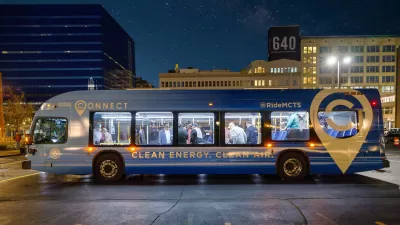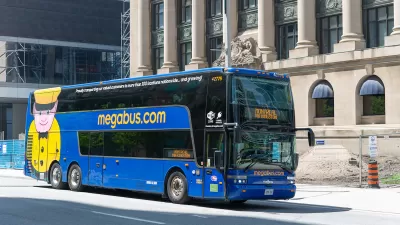Guangzhou, China's public transit network barely existed back in the late 1980s, when the Guangzhou Metro Corporation (GMC) was created to oversee its creation. Today they employ over 17,000 people and in 2010 GMC carried 1.18 billion passengers.
Brian Baker looks at the rapid growth of Guangzhou's transit system:
"The initial 5.4km section of Line 1 opened in 1997 and linked Xilang with Hangshwa along an east–west corridor. In 1999 it was extended to Guangzhou East rail station and traversed 18km with 16 stations."
"By November 2010 the Guangzhou metro network totalled 236km with 144 stations. There are 8 lines. And not all of them are limited to the city and environs. The network had expanded by 170km in five years. The metro system now reaches into the outer suburbs of the city and beyond the city boundaries."
FULL STORY: Guangzhou Metro: From nought to 1.2 billion passengers in 20 years

Alabama: Trump Terminates Settlements for Black Communities Harmed By Raw Sewage
Trump deemed the landmark civil rights agreement “illegal DEI and environmental justice policy.”

Planetizen Federal Action Tracker
A weekly monitor of how Trump’s orders and actions are impacting planners and planning in America.

How Atlanta Built 7,000 Housing Units in 3 Years
The city’s comprehensive, neighborhood-focused housing strategy focuses on identifying properties and land that can be repurposed for housing and encouraging development in underserved neighborhoods.

Report: Zoning Reforms Should Complement Nashville’s Ambitious Transit Plan
Without reform, restrictive zoning codes will limit the impact of the city’s planned transit expansion and could exclude some of the residents who depend on transit the most.

Judge Orders Release of Frozen IRA, IIJA Funding
The decision is a victory for environmental groups who charged that freezing funds for critical infrastructure and disaster response programs caused “real and irreparable harm” to communities.

‘Clybourne Park’ Sets Stage for Housing Equity Discussions
Clybourne Park, a play exploring race, real estate, and community tensions, can set the stage for discussion on the lasting impacts of housing discrimination, gentrification, and the fight for affordability.
Urban Design for Planners 1: Software Tools
This six-course series explores essential urban design concepts using open source software and equips planners with the tools they need to participate fully in the urban design process.
Planning for Universal Design
Learn the tools for implementing Universal Design in planning regulations.
Caltrans
Smith Gee Studio
Institute for Housing and Urban Development Studies (IHS)
City of Grandview
Harvard GSD Executive Education
Toledo-Lucas County Plan Commissions
Salt Lake City
NYU Wagner Graduate School of Public Service





























